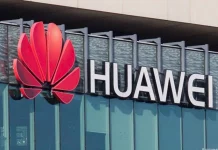In a remarkable turn of events, Chinese tech giant Huawei is poised to make a triumphant return to the 5G smartphone industry later this year, defying the impact of the U.S. ban on equipment sales. Several research firms have indicated that Huawei’s comeback is imminent, signaling a resurgence after the ban had severely hampered its consumer electronics business.
To sidestep the U.S. export rule that prevented the company from receiving cutting-edge chips, Huawei has devised a strategic plan. The company will leverage its own advancements in semiconductor design tools and forge a partnership with Semiconductor Manufacturing International Co (SMIC), a major Chinese chip manufacturer. This collaboration will enable Huawei to procure 5G chips domestically, ensuring a steady supply for its upcoming flagship devices.

The ban, which included placing Huawei on the U.S. Commerce Department’s Entity List, had forced the company to rely on Snapdragon chipsets modified for 4G networks instead of offering true 5G connectivity. However, Huawei’s latest move is set to change that narrative as it sets its sights on providing consumers with cutting-edge 5G technology once again.
Huawei’s potential return to the 5G phone market would mark a significant victory for the company, which has battled against adversity for nearly three years. After reaching a revenue peak of $67 billion in 2020, Huawei’s consumer business suffered a devastating blow, with revenue dropping by almost 50% the following year.
While this resurgence appears promising, industry experts caution that the production of 5G chips domestically may come with challenges. Semiconductors manufactured using Huawei’s EDA tools and SMIC production may have a relatively low yield rate of 50%. Nonetheless, Huawei seems determined to overcome these obstacles and reclaim its position as a prominent player in the competitive 5G smartphone market.
The U.S. imposed restrictions on Huawei, deeming it a national security threat due to alleged ties with China’s Communist Party. The concerns revolve around the possibility of Huawei assisting the Chinese government with espionage if called upon. Placing Huawei on the Entity List came at a critical moment when the company was on the brink of becoming the world’s largest smartphone manufacturer. However, its consumer revenue plummeted from $67 billion in 2020 to half that amount in 2021. Huawei’s potential resurgence in the 5G market carries significant implications in its ongoing battle for survival.
As the end of the year draws near, all eyes will be on Huawei as consumers and industry insiders eagerly await the company’s highly anticipated 5G smartphone release, marking a potential turning point in Huawei’s comeback journey.
Related:
Huawei showcases its self-developed AI tech to rival ChatGPT at Cloud Developer Conference
Key features of next-gen Huawei clamshell foldable smartphone leaks
(via)







